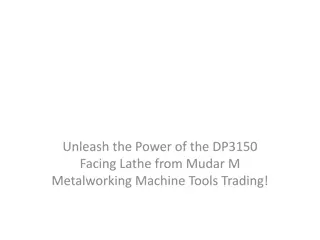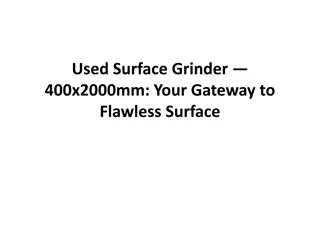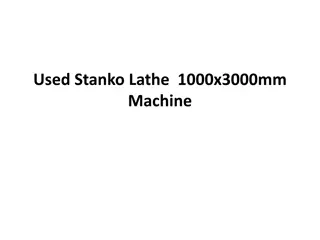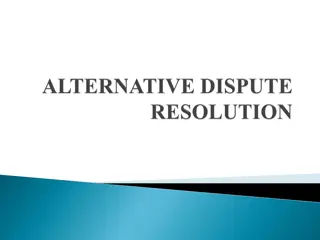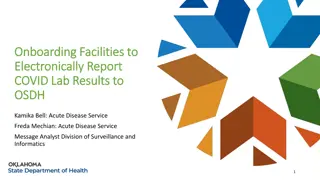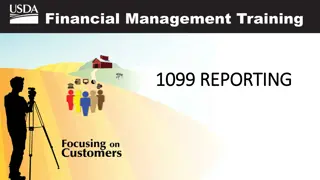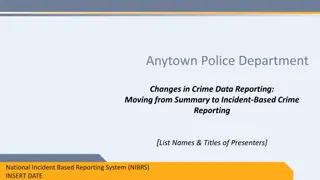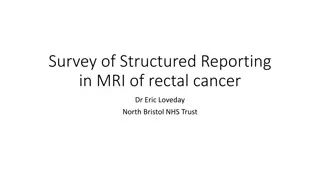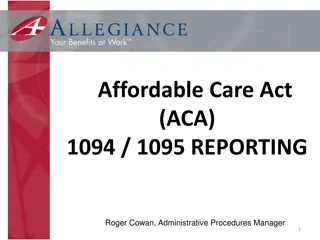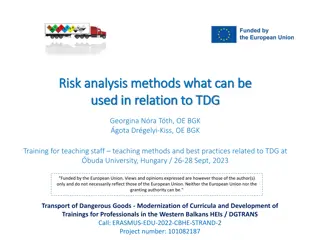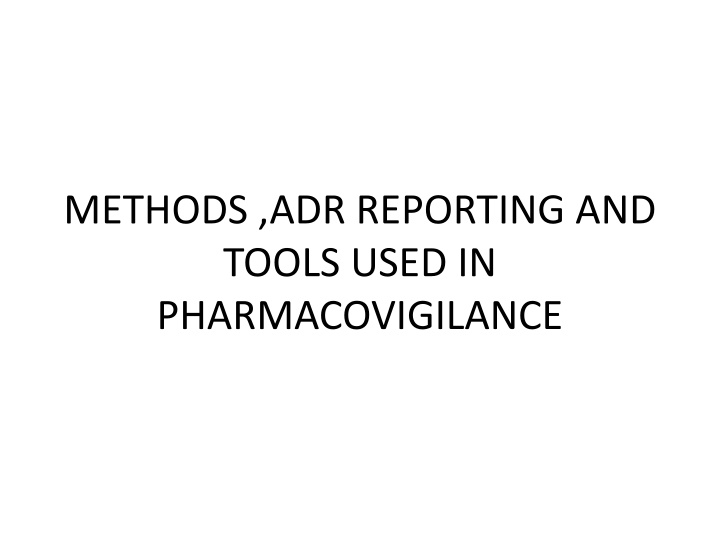
Pharmacovigilance: A Guide to ADR Reporting Methods and Tools
Explore the importance of ADR reporting in pharmacovigilance, the definition of adverse drug reactions, reasons for reporting, benefits of reporting, information required for reporting, and the reporting procedure.
Download Presentation

Please find below an Image/Link to download the presentation.
The content on the website is provided AS IS for your information and personal use only. It may not be sold, licensed, or shared on other websites without obtaining consent from the author. If you encounter any issues during the download, it is possible that the publisher has removed the file from their server.
You are allowed to download the files provided on this website for personal or commercial use, subject to the condition that they are used lawfully. All files are the property of their respective owners.
The content on the website is provided AS IS for your information and personal use only. It may not be sold, licensed, or shared on other websites without obtaining consent from the author.
E N D
Presentation Transcript
METHODS ,ADR REPORTING AND TOOLS USED IN PHARMACOVIGILANCE
Introduction Clinical trial study of the drug detects ADR but, the reactions occurs after long duration in a specific population remains undetected. . So, Pharmacovigilance is a activity which keeps constant watch on the drug throughout its life cycle. In India, IPC and NCC through the CDSCO regulate the PV activity. Then Pharmacovigilance programme in India have been proposed in 2010. Anyone can report ADR by filling the suspected ADR reporting form available online or offline to the nearest centres in suitable languages.
Adverse Drug Reaction According to WHO, an adverse drug reaction defined as, Any responses to a drug which is noxious unwanted effect of drug doses used in human for prophylaxis, diagnosis and therapy". For example; when drug metabolism is temporarily inhibited by a disorder or another drug
Why ADR Reporting? ADRs are among the leading causes of death in many countries (World Health Organization, 2008). Account for 5% of all hospital admissions in India. Constitutes a significant economic burden on the patient and government.
Benefits of ADR Reporting Assess the safety of drug therapies, especially recently approved drugs. Provides updated drug safety information to health care professionals and other stakeholders Measuring the economic impact of ADR prevention as manifested through reduced hospitalization, optimal and economical drug use, and minimized organizational liability. Regulatory action on the basis of ADR reports to ensure patient's safety. Marketing Authorization Recall (withdrawal), Batch recall based on clustering of ADR
Information required for ADR Reporting The minimal standard information to be provided for the proper estimation of the ADR case report are: Patient information Description of adverse reactions (include laboratory results if available) Information related to the suspected drug(s) Information on the management of the adverse reactions Information about the reporter
ADR Reporting Procedure What to report? How to report? Where to report? Who to report?
Who can report? # All healthcare professionals (Clinicians, Dentist, Pharmacist, Nurses, Physician, Physiotherapist etc). # All non- healthcare professionals including consumers/ patients etc can report ADRs.
What to Report? All types of suspected adverse reactions. Known or unknown, Serious or non-serious Frequent or rare Reactions from all types of pharmaceutical products i.e. Allopathy, Ayurvedic, Vaccines, Medical devices etc.
How to Report? Report should be on a standardized ADR reporting form. Dully filled the ADRs in the reporting from when an ADR is encountered. Use a separate from for each patient and filled with the complete information. The completed ADR form is then returned to the nearest adverse drug reaction monitoring Centre (AMC) or to National Coordinating Centre. Any follow-up information for an ADR case that has already been reported can be sent on another ADR form, or communicated by telephone, fax or e- mail.
Where to Report? Report any suspected ADRs for any marketed pharmaceutical products or new drug to the appropriate channels are as follows: Preferably directly to the Pharmacovigilance center of a hospital. National Pharmacovigilance center. Zonal drug information centers.
Methods for ADR Reporting # Spontaneous reporting: Mostly used ADR for monitoring, it records the safety of a drug based on post marketing surveillance to identify new, rare, serious ADRs of a drug. # Case series reporting: It is used to develop a hypothesis between approved drugs and it outcomes. # Stimulated reporting: It encourages and facilitates health professionals report ADRs under special situation. # Active surveillance: It is pre-designed process which is conducted in addition to process passive surveillance to find out more serious adverse drug events. # Comparative observation studies: Includes study designs such as cross- sectional, cohort and case study to compare the possible ADR associated with drug use with other group etc.
Tools for ADR Reporting 1. Argus oracle: It is a software for ADR monitoring, mainly used by drug manufacturer in USA. It is a comprehensive pharmacovigilance platform enabling manufactures to make faster and better safety decision and risk management. In other words it is necessary for clinical and post marketing surveillance.
Continue.... 2. Aris G It is a software for ADR monitoring, and is mainly used by drug manufacturer in Europe. Aris G is a leading pharmacovigilance and clinical safety system that helps companies efficiently process all safety cases and generate appropriate global reports for distribution to regulatory authorities and partners.
continue...... 3. Vigiflow, Vigibase Vigiflow: It is a management system for recording, processing and sharing reports of adverse effects. It supports the domestic collection and processing of individual case safety report data. Vigibase: It is the single largest drug safety data repository in the world. Since 1978, the Uppsala Monitoring Centre on behalf of WHO, have been maintaining Vigibase, used to obtain the information about a safety profile of a medicinal product.





